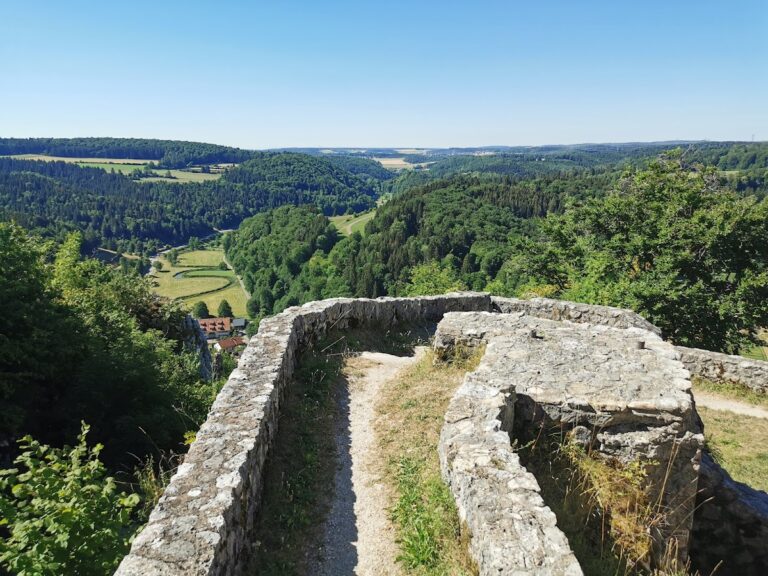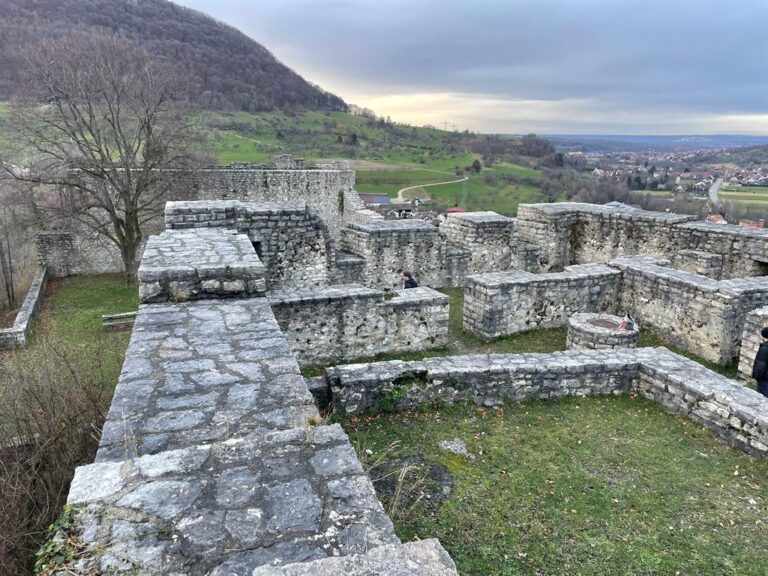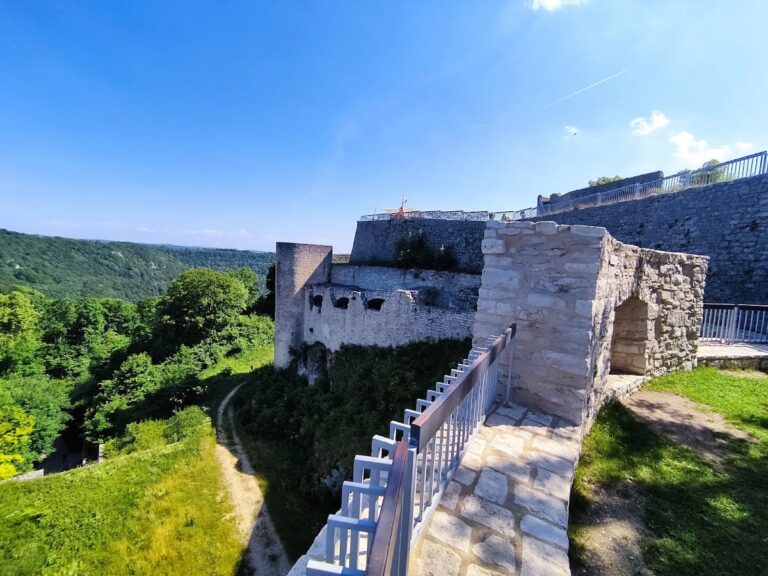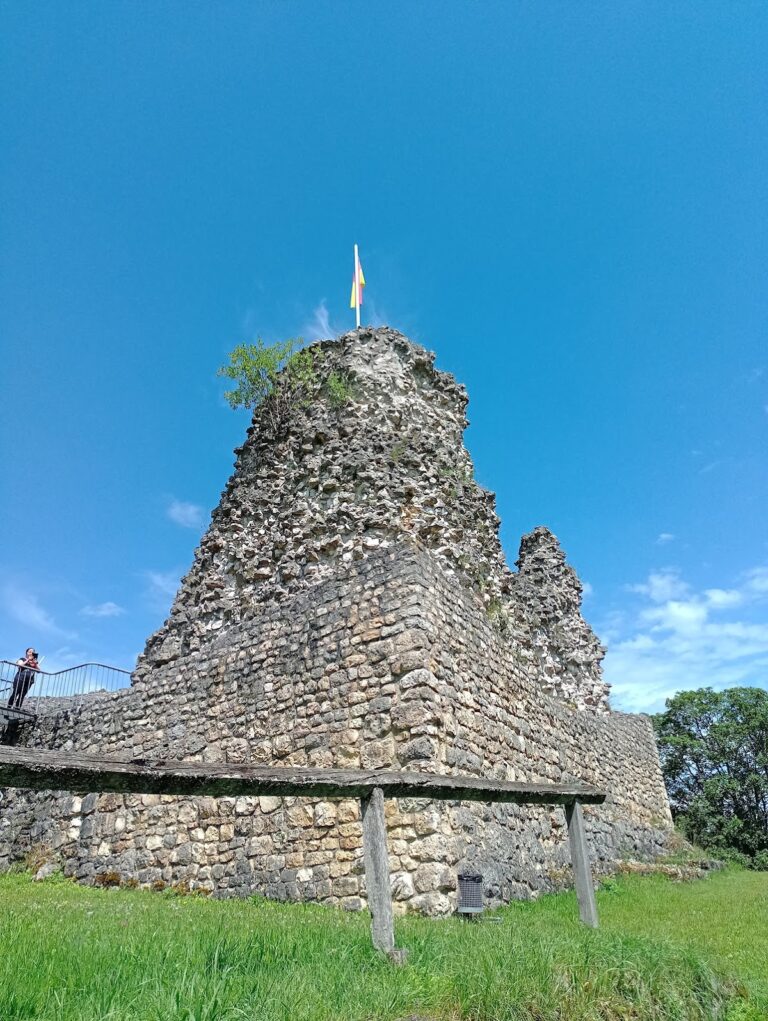Burg Bichishausen: A Medieval Rock Castle Ruin in Münsingen, Germany
Visitor Information
Google Rating: 4.6
Popularity: Low
Google Maps: View on Google Maps
Official Website: www.schwaebischealb.org
Country: Germany
Civilization: Unclassified
Remains: Military
History
Burg Bichishausen is a medieval rock castle ruin situated in Münsingen, Germany. It was constructed during the Middle Ages by the local German nobility and reflects a long history of regional power dynamics.
The site originally belonged to the Counts of Achalm in the 11th century, probably under the rule of Rudolf. By the 13th century, ownership shifted to the Gundelfingen family, prominent nobles of the region. The castle itself was built in the first half of the 1200s, most likely commissioned by either Swigger IV of Gundelfingen or Konrad II, who later served as a judge for Württemberg. Around the year 1300, a significant transformation took place: an older tower was torn down, and the castle underwent a comprehensive rebuilding that included the construction of a robust shield wall. This renovation resulted in a fortified structure featuring two courtyards, typical of shield wall castles designed for defense.
In 1372, Kuno Truchsess von Bichishausen died in combat while fighting on the side of Württemberg against the nearby imperial city of Reutlingen. Following mid-14th century transitions, the castle came under the possession of the Truchsessen von Magolsheim family. After the death of the last member of this family in 1510, the estate passed to the Buttlar family.
Heinrich Treisch von Buttlar, an imperial councilor who had participated in the Turkish wars, undertook significant modernization efforts during the 16th century. He updated the castle’s residential features to the contemporary standards of the time and fortified it further by adding zwinger walls—outer defensive enclosures designed to strengthen protection. After the death of Heinrich’s wife Anna in 1545, the castle slowly entered a period of decline.
Throughout the second half of the 16th century and into the 17th century, ownership changed hands multiple times. Among the subsequent holders were Wolf von Vellberg in 1545, Count Georg II of Helfenstein in 1552, and later the Prince of Fürstenberg in 1627. The castle eventually suffered destruction during the 17th century, after which it remained in ruins. It entered private ownership in 1923 before being transferred to local district authorities in 1972, leading to restoration work during the 1970s.
Remains
Burg Bichishausen is classified as a rock castle ruin, positioned on the elevated terrain of the Swabian Jura at approximately 640 meters above sea level. Its strategic location once marked the border between Württemberg and Fürstenberg, and it formed part of a cluster of eleven castles visible along the Lauter valley.
The castle’s layout is centered around a massive shield wall, a defensive feature typical for fortresses designed to absorb and repel attacks. This shield wall encloses two inner courtyards, creating a compact but fortified space for both defense and habitation. During restoration work carried out between 1973 and 1975, the remains of the castle’s main tower, known as the bergfried, were uncovered. Specifically, the stump of this central tower, dating from the 13th century, was brought to light, revealing its foundational structure.
In the 16th century, the castle’s defensive capabilities were enhanced with the addition of zwinger walls. These outer courtyards served as an extra layer of protection, designed to trap or slow down attackers before they could reach the castle’s interior. Built from the regional stone, these walls further reinforced the castle’s position both strategically and militarily.
Today, the visible remains primarily consist of the bergfried’s base and the imposing shield wall, both standing as silent witnesses to the castle’s medieval past and its later phases of expansion and decay. These ruins reflect the architectural and defensive strategies characteristic of their respective periods without ornamental details or inscriptions documented. The site’s elevated position and construction technique continue to demonstrate its role as a border fortress.










